Contents
Trello vs. Jira: Detailed Comparison (Features, Pricing)
By Shyamal ParikhDec 20, 2024

Both Trello and Jira are part of the Atlassian suite but are designed for very different needs.
Trello’s simple Kanban boards make it a go-to for teams looking for easy task tracking. Jira, in contrast, is built to manage more complex workflows, especially in software development.
So, which tool is the right fit for your team? Which one offers better resource and task management features and clearer project visibility? Most importantly, which delivers the best value for your money?
Let's take a closer look at it in this Trello vs. Jira comparison.
Fast Facts: Trello vs. Jira in 2025
Trello - The Ultimate Kanban Project Management Solution
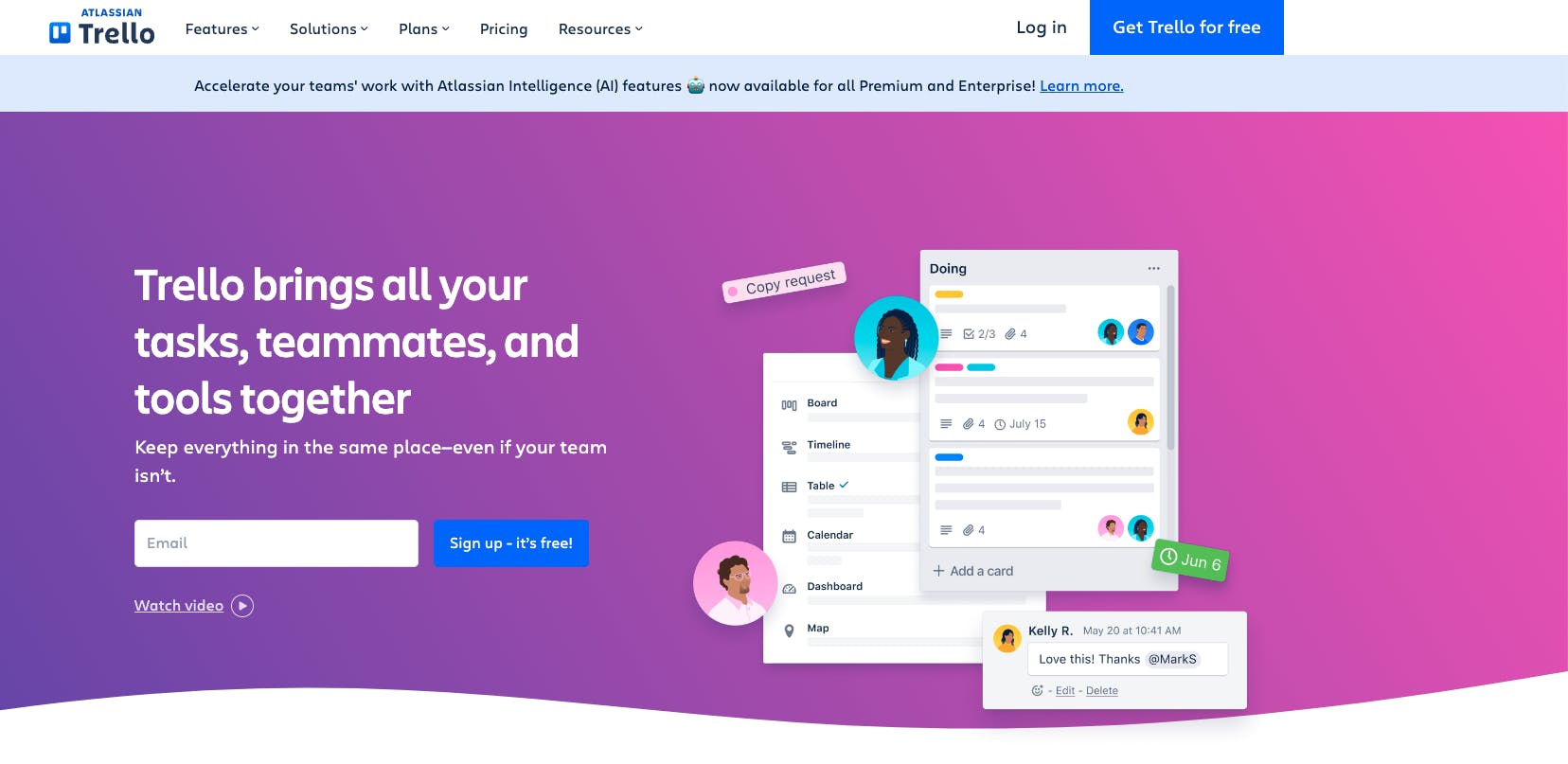
Known for its Kanban boards and simple drag-and-drop interface, Trello makes project management highly accessible—especially for beginners. Its ease of use also makes it a go-to tool for individuals and small teams looking to streamline their operations.
Key Features:
- Customizable Kanban boards
- Lists for breaking down projects into manageable tasks
- Cards with checklists, due dates, reminders, and file attachments
- Power-Ups (or integrations)
- Butler (automation bot) for automating repetitive tasks
- Comments, tags, and mentions for collaboration
What Users Say About Trello?
Trello has an average rating of 4.4 on G2, Capterra, and GetApp, with stellar reviews for its ease of use, project management, and task management features.
Users love Trello’s simplicity and flexibility, along with its drag-and-drop interface, which makes moving tasks through different stages a breeze.

However, they also feel Trello is inadequate for projects that demand rigorous reporting, time tracking, and analytics. The lack of Gantt charts and dependencies also makes it less useful for teams that need more robust task management.

Why Consider Trello Over Jira?
- Easy to set up and use
- Offers a generous free version and more affordable pricing for small teams
- Power-Ups(integrations) for flexible integration with popular tools like Google Drive and Slack
- Butler automation bot for streamlining repetitive tasks
Jira - Work Management Solution for Software Teams
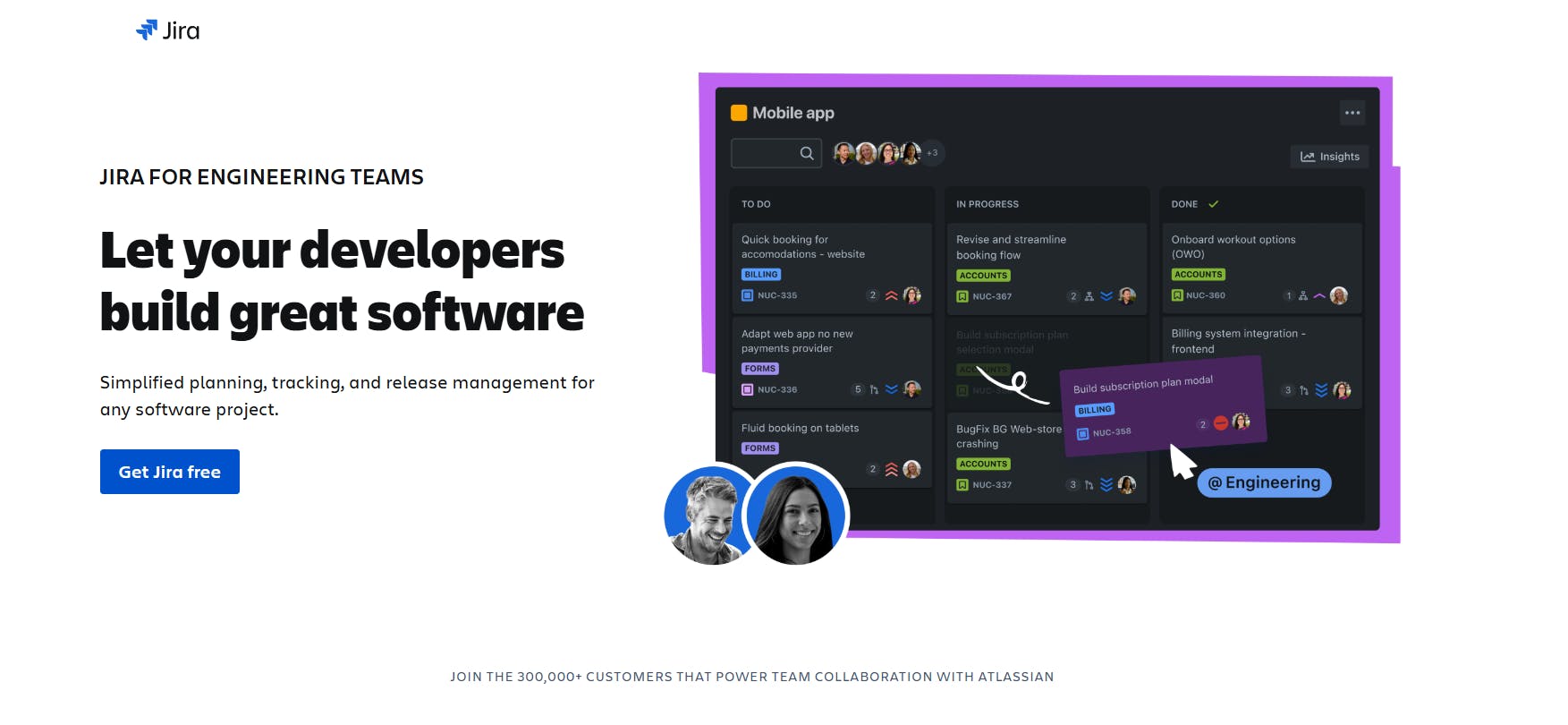
Jira is a cloud-based project management tool built for software development teams. As part of the Atlassian suite alongside Trello, it offers detailed task management that complements Trello's visual boards.
Key Features
- Multiple project views (Board, Timeline, List, Backlog, Summary, and Calendar)
- Project Pages for centralized project documentation
- Issues (or tasks) with subtasks and dependency management
- Built-in time tracking for better project monitoring
- Custom workflows
- 12+ types of reports, including Burndown charts and Sprint reports
- Integrates with 3000+ tools
What Users Say About Jira?
Jira has an average rating of 4. 3 on G2, Capterra, and GetApp, with stellar reviews for its project management, task tracking, and integration features.
Users like Jira’s ability to adapt to a wide range of workflows and its extensive customization features.

However, Jira's extensive features and advanced customizations create a steep learning curve, often requiring technical expertise for configuration.

Why Consider Jira Over Trello?
- Advanced project management with subtasks and dependencies
- Customizable workflows
- Extensive reporting capabilities with 12+ built-in report types
- Built-in time tracking
- Support for Kanban and Scrum methodologies
- Enhanced security and compliance features for enterprise-level teams
Feature Face-Off: How Trello and Jira Measure Up
Now that we know more about Trello and Jira, let's compare them across key categories: user experience, task management, time tracking, reporting, collaboration, customer support, and pricing.
User Experience
Trello's visual interface and drag-and-drop features make it easy to use, but boards can become cluttered and harder to manage as projects grow.
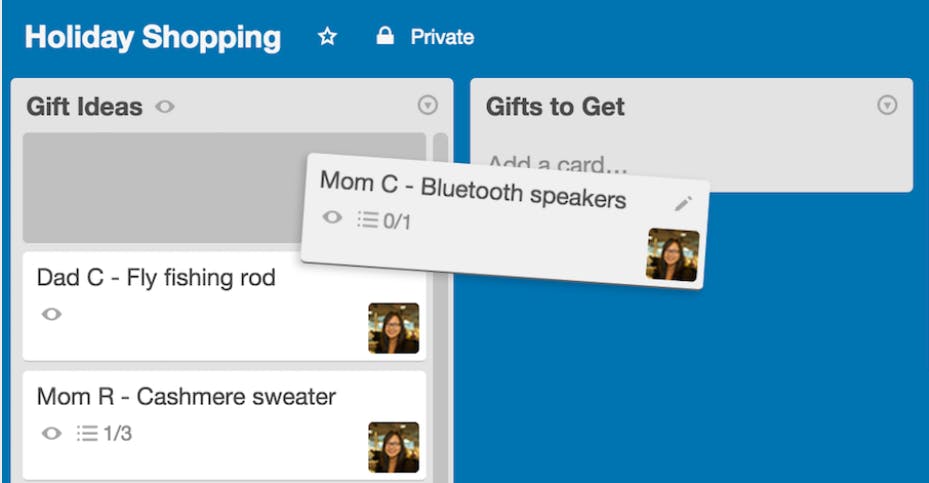
Jira is designed with technical users in mind and can be overwhelming for new users. It also requires extensive setup and configuration – which can be challenging, especially if you’re looking for a hassle-free work management solution.
Task Management
Trello's free tier only offers a Kanban view for basic task tracking, with advanced views restricted to the Business plan. It also lacks key features like task dependencies, Gantt charts, road mapping, and iteration reviews (end-of-sprint evaluations), limiting its use for complex project management.
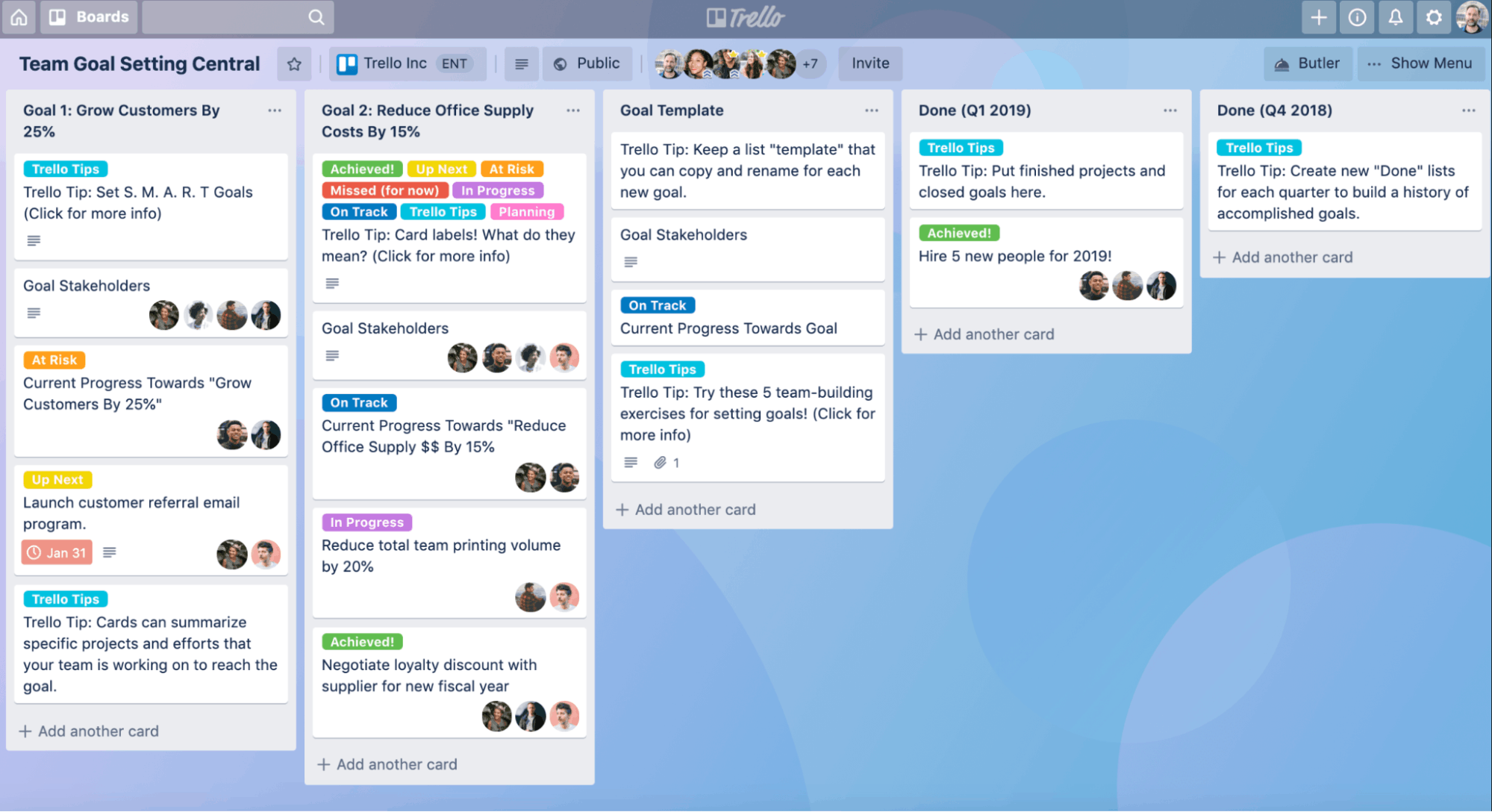
In contrast, Jira offers a robust task management system even in its free tier. It provides multiple views, including Backlog, Calendar, Summary, Timeline, Board, and List. Its comprehensive features, including subtasks and dependency management, allow detailed project oversight.
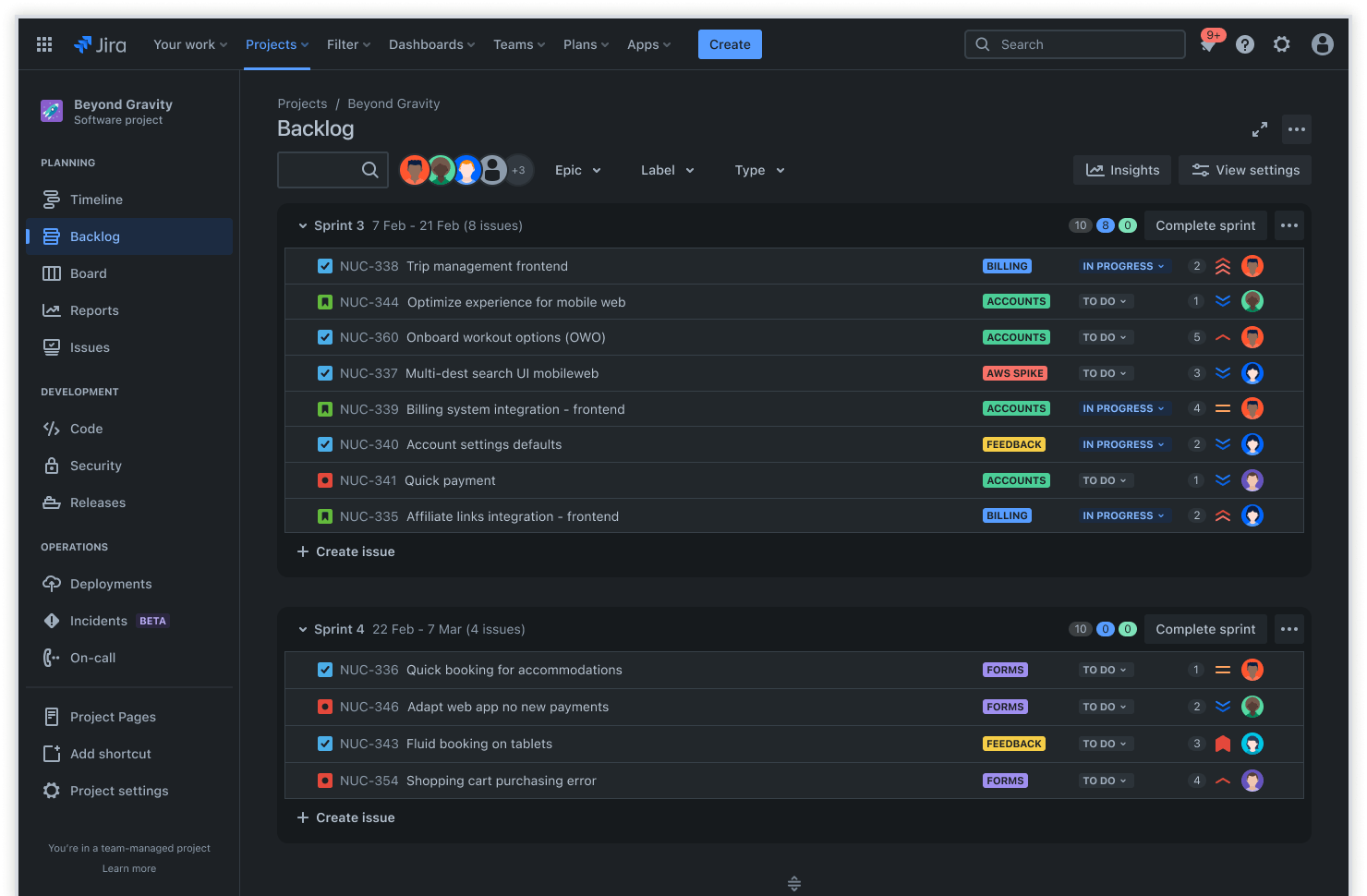
Time Tracking and Resource Management
Trello lacks built-in time tracking, making it difficult to monitor team activity and the time required for each task. You can use third-party tools to address this, but they will add to your overall costs.
As for capacity planning, Trello doesn't offer any features that help with resource allocation and tracking.
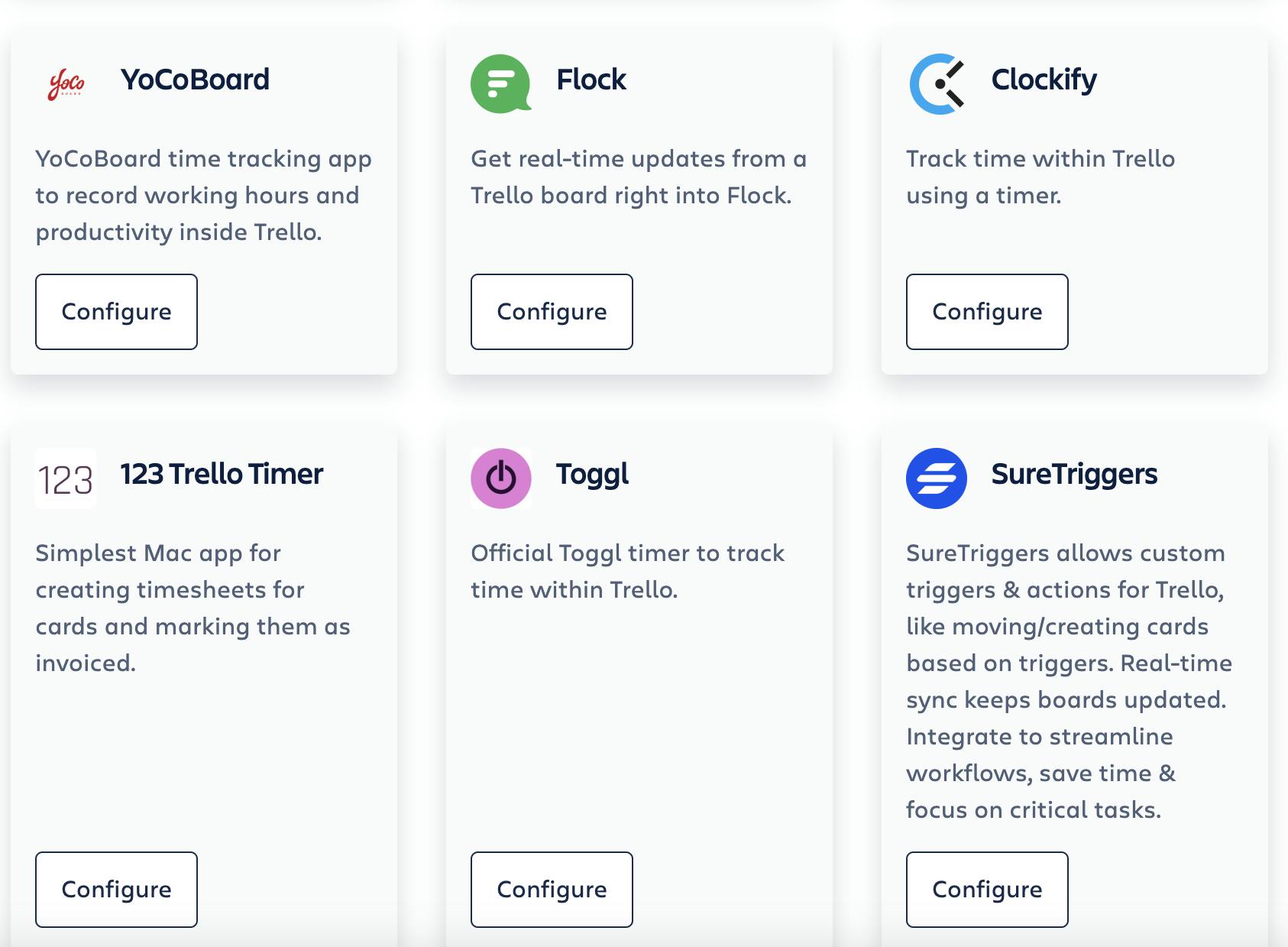
Jira offers robust time-tracking capabilities that allow users to track the time spent on tasks and generate detailed reports for analysis. While it doesn’t include dedicated resource management features, Jira supports basic resource planning through its advanced roadmaps and project management tools.
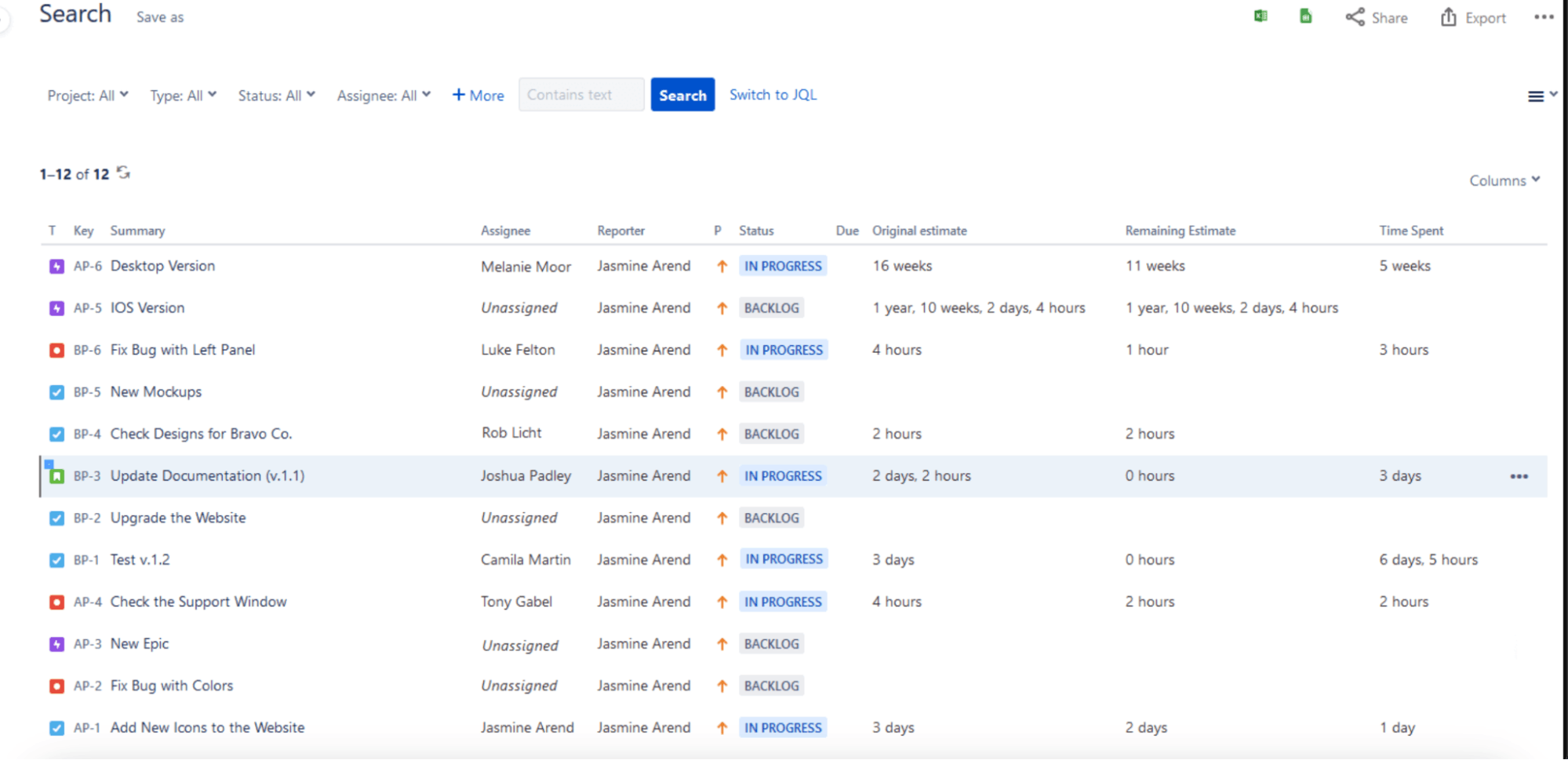
Reporting and Analytics
Trello doesn’t have built-in reporting tools, which means users must rely on Power-Ups like Toggl, Blue Cat, and Bamboo Metrics to monitor their projects.
Jira, in contrast, comes out of the box with over 12 reports, providing managers with actionable insights into their team’s performance in real-time.
Burndown charts, sprint reports, velocity charts, release burndown, version reports, burnup charts, and cumulative flow diagrams are just a few of the agile reports available in Jira.
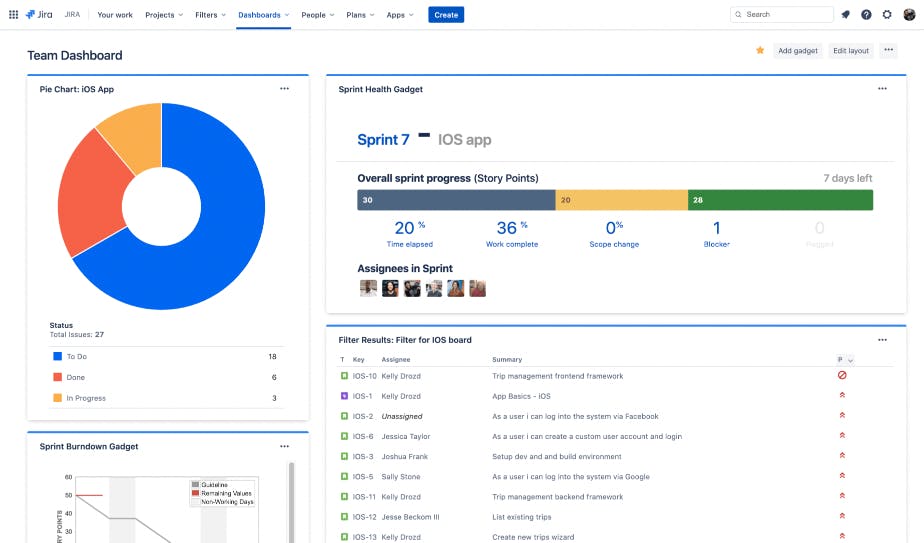
Collaboration
Trello lacks built-in chat functionality but offers a robust Slack integration that lets you paste Slack links directly into Trello cards and view key details, such as assignees, task descriptions, and recent comments.
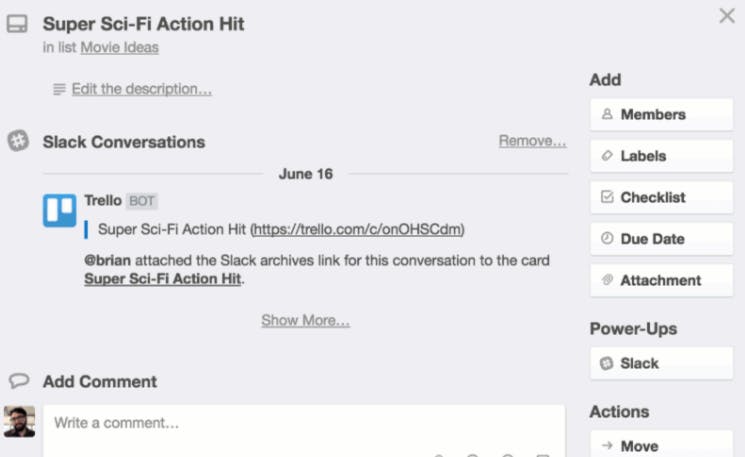
Jira also lacks built-in collaboration tools like chat or video calling. However, like Trello, you can integrate it with third-party tools like Slack to facilitate real-time conversations.
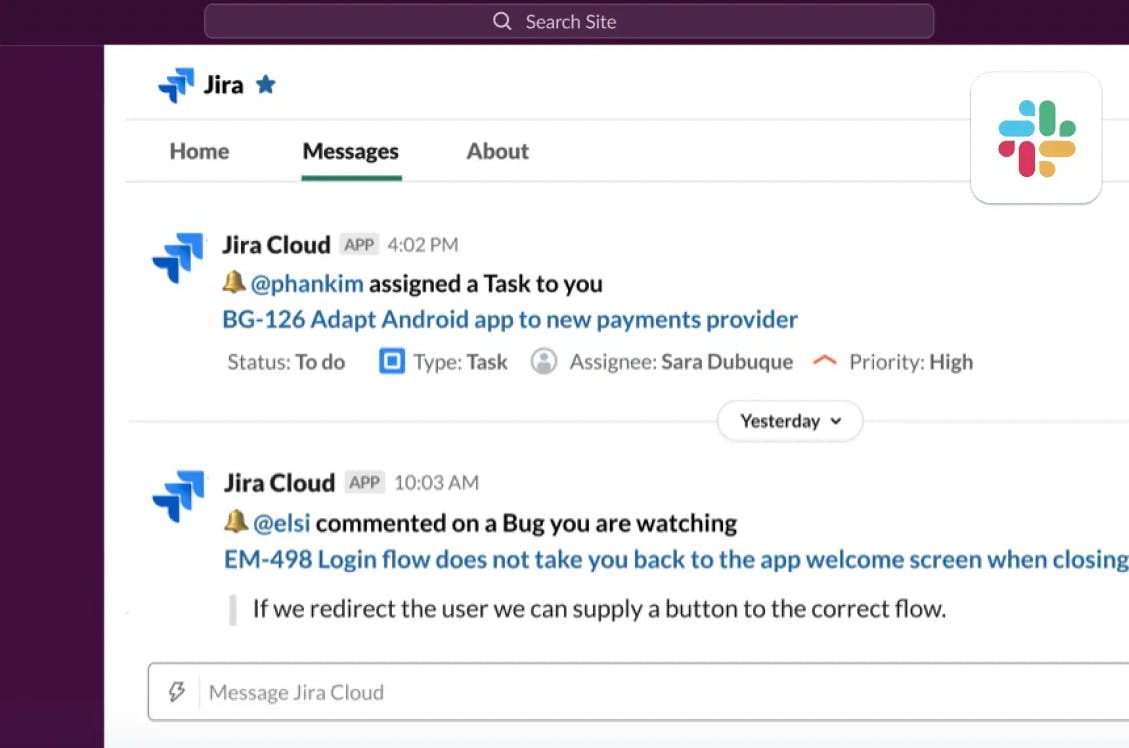
Customer Support
Trello offers no direct support for free users, who must rely on community forums and documentation for assistance. Even its paid plans provide limited support, reserving 24/7 assistance for enterprise users, which can be frustrating for smaller teams.
Jira's customer experience is also mixed. While many users appreciate its comprehensive documentation, others report inconsistent response times and variable quality of assistance.
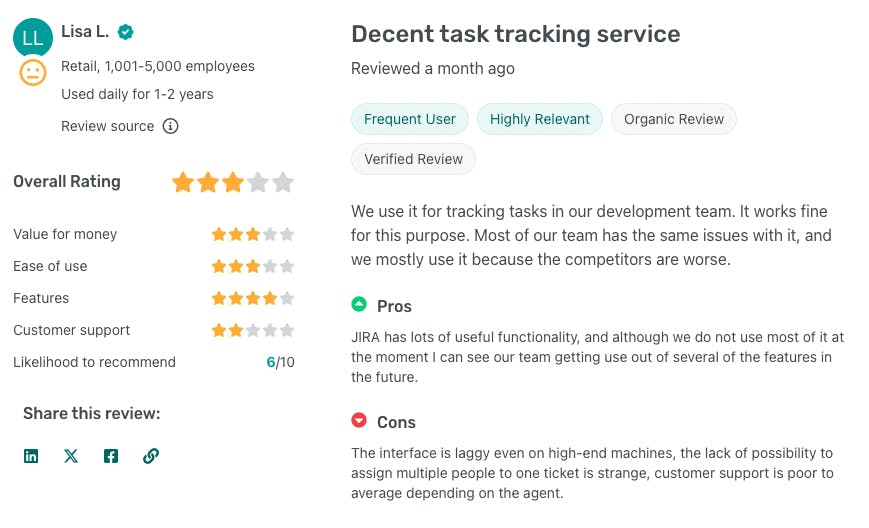
Pricing
While it works well for small teams, Trello’s free plan lacks advanced features like multiple views, for which you need to shell out $10/month. You must also consider the cost reporting and time tracking power-ups that you may potentially need to streamline your workflow.
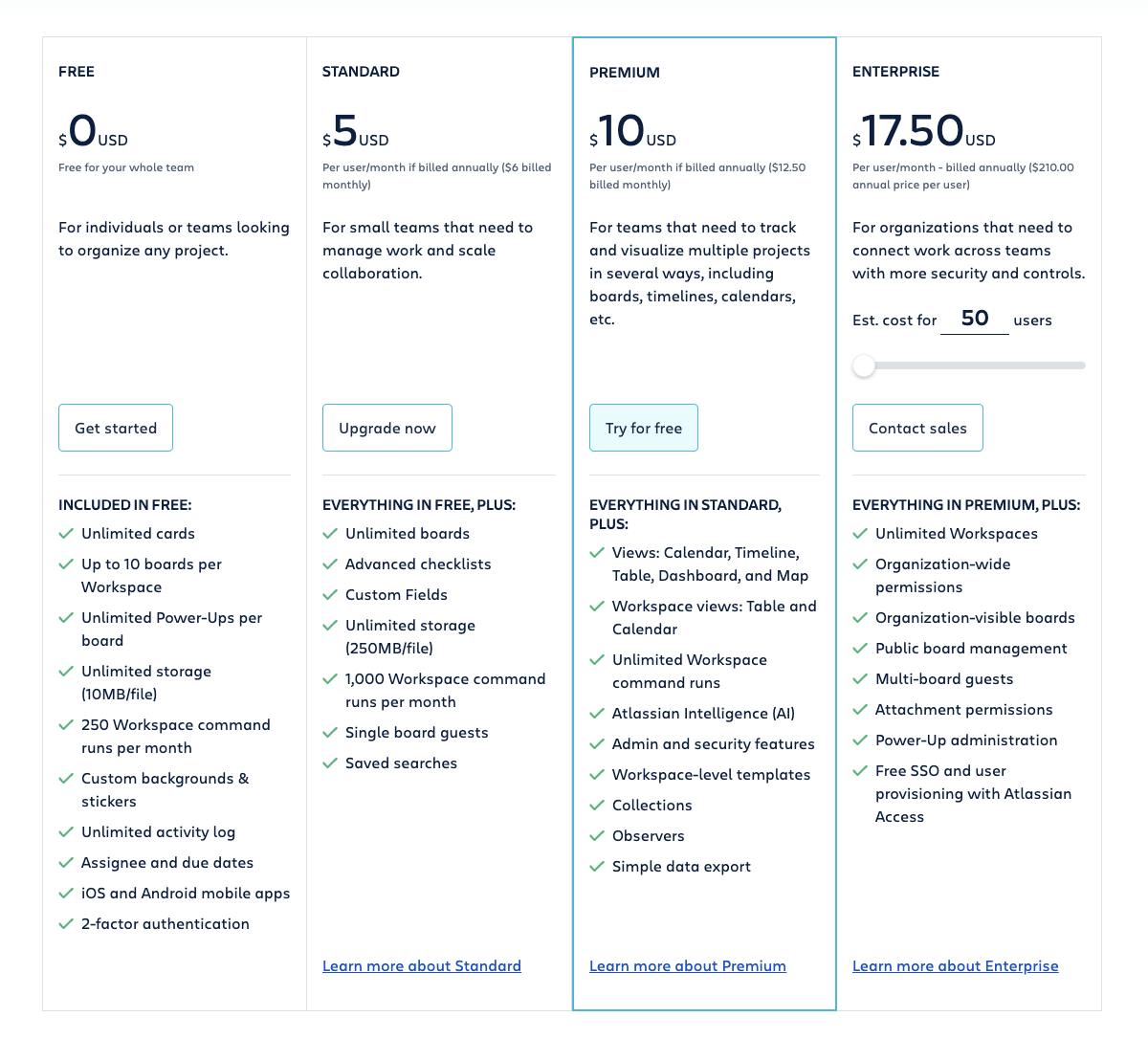
Jira offers more in its free tier, including multiple project views, basic reports, and insights into team performance. Its Standard and Premium plans unlock advanced roadmaps, analytics, and automation for agile projects.
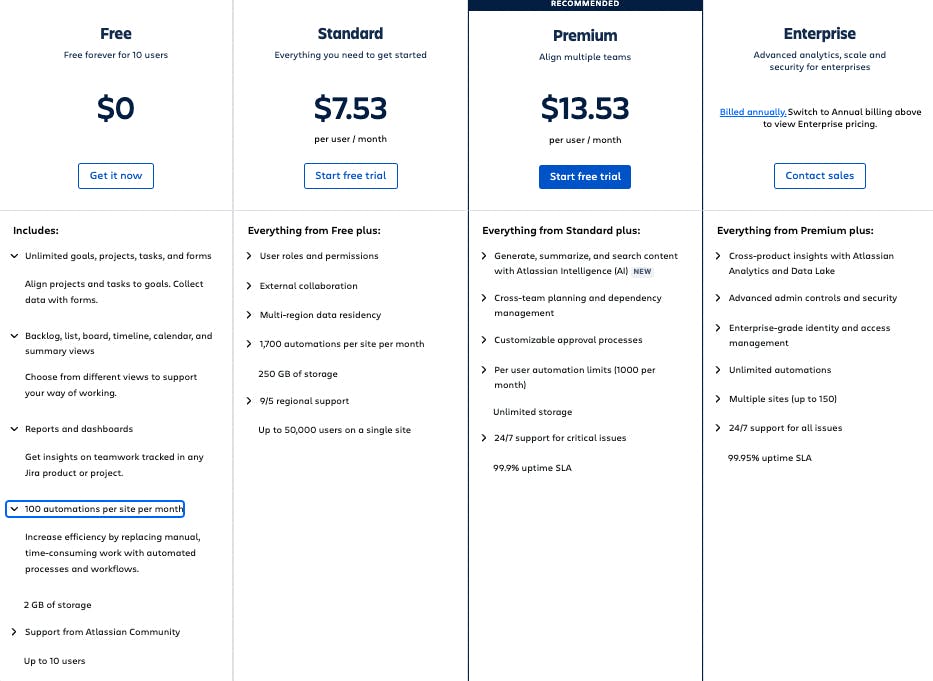
Admin Controls and Customization
Overall, Jira offers more advanced admin controls and customization, allowing for granular user permissions, workflow tailoring, and access management — which is ideal for large teams with complex needs.
Trello, while simpler, provides basic admin controls that work for smaller teams but lacks the in-depth customization options Jira offers.
SmartTask: The Ultimate Trello and Jira Alternative for Time and Resource-Conscious Teams
While Trello and Jira both excel at project management, their limitations can hinder teams from managing complex projects. Neither platform offers robust resource planning features, making it challenging to assign people to the right projects.
Additionally, neither tool has a built-in chat or video conferencing, which means users must rely on third-party apps for communication.
SmartTask bridges these gaps with its comprehensive feature set that simplifies time tracking, resource allocation, project cost estimation, and client collaboration.
Here's a closer look at its features:
- SmartTask offers multiple project views, including Kanban, Gantt Chart, List, and Calendar, in its free tier.

- SmartTask includes built-in time tracking with daily and weekly activity logs, task-level time estimates, and billable hours, making it perfect for teams that bill clients hourly and need accurate cost tracking.
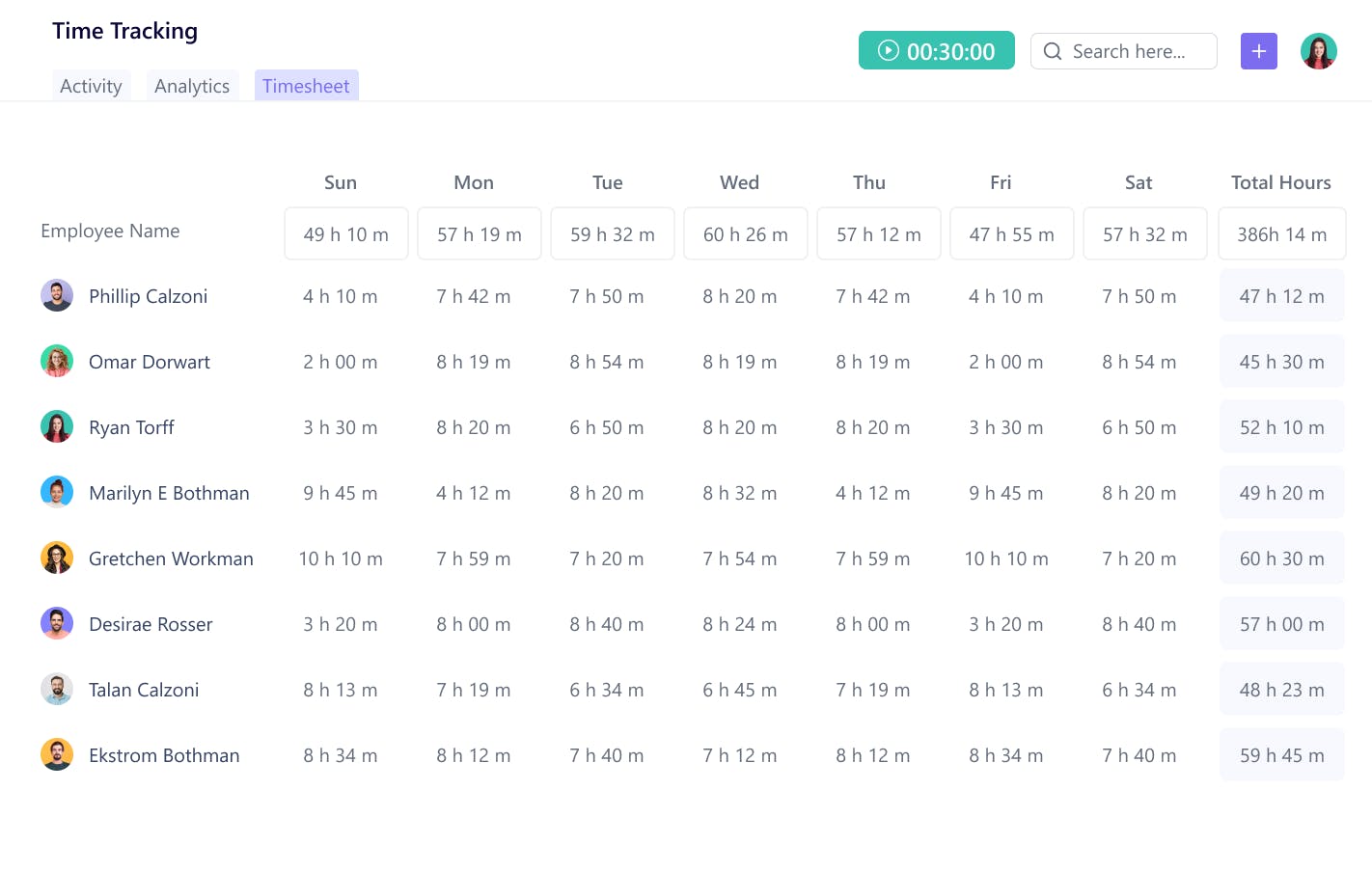
- SmartTask provides advanced workload management features, giving real-time insights into team capacity and availability. This helps prevent under- or over-utilization of resources and optimizes team performance.

- SmartTask comes with built-in chat and video-calling features that facilitate real-time communication. It also has project feeds, task comments, and automated check-ins to keep everyone on the same page
- In addition to everything on this list, SmartTask also includes a built-in CRM system that helps you store and connect with contacts, track inquiries through the sales funnel, forecast revenue, and monitor team performance
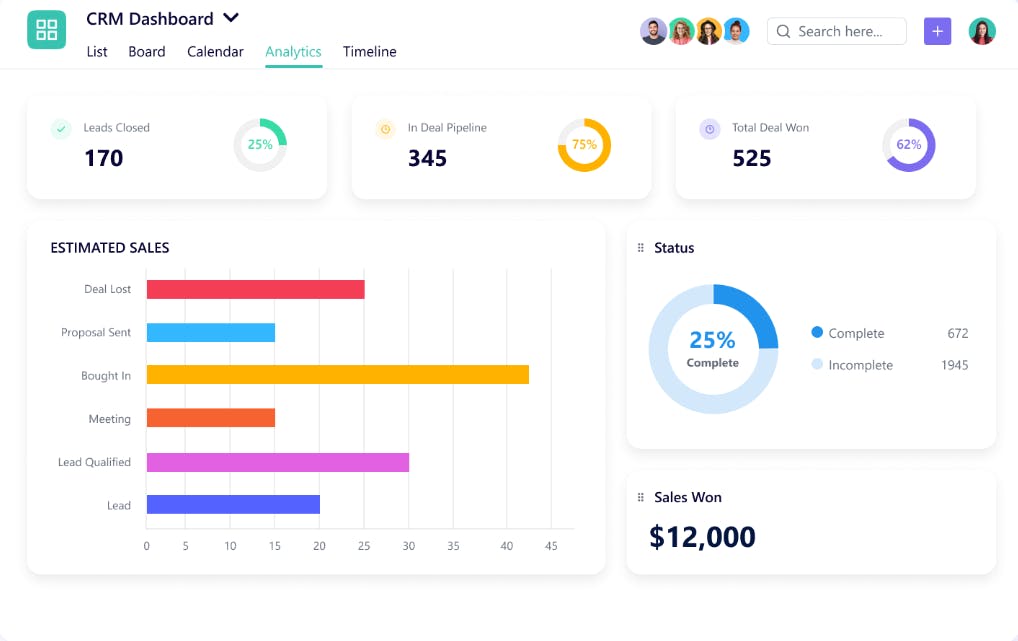
SmartTask stands out not only for its robust features but also for its competitive pricing. Its Free Forever plan includes:
- Unlimited tasks, users, and contacts
- Multiple project views
- Custom fields
- Reporting tools
If you want more features, look into SmartTask's paid plans that start at just $7.99 per user/month and include advanced user controls, along with:
- Portfolios
- Time tracking
- Workload management
- CRM tools
- Built-in chat
- Advanced analytics
In comparison, Jira’s Starter Plan, priced at $7.53 per user per month, offers fewer features. The $13.53 Premium Plan, designed for multiple teams, also lacks functionalities already available in SmartTask, such as:
- Task dependencies
- Instant messaging
- Multiple views
- Custom charts
- 24/7 support
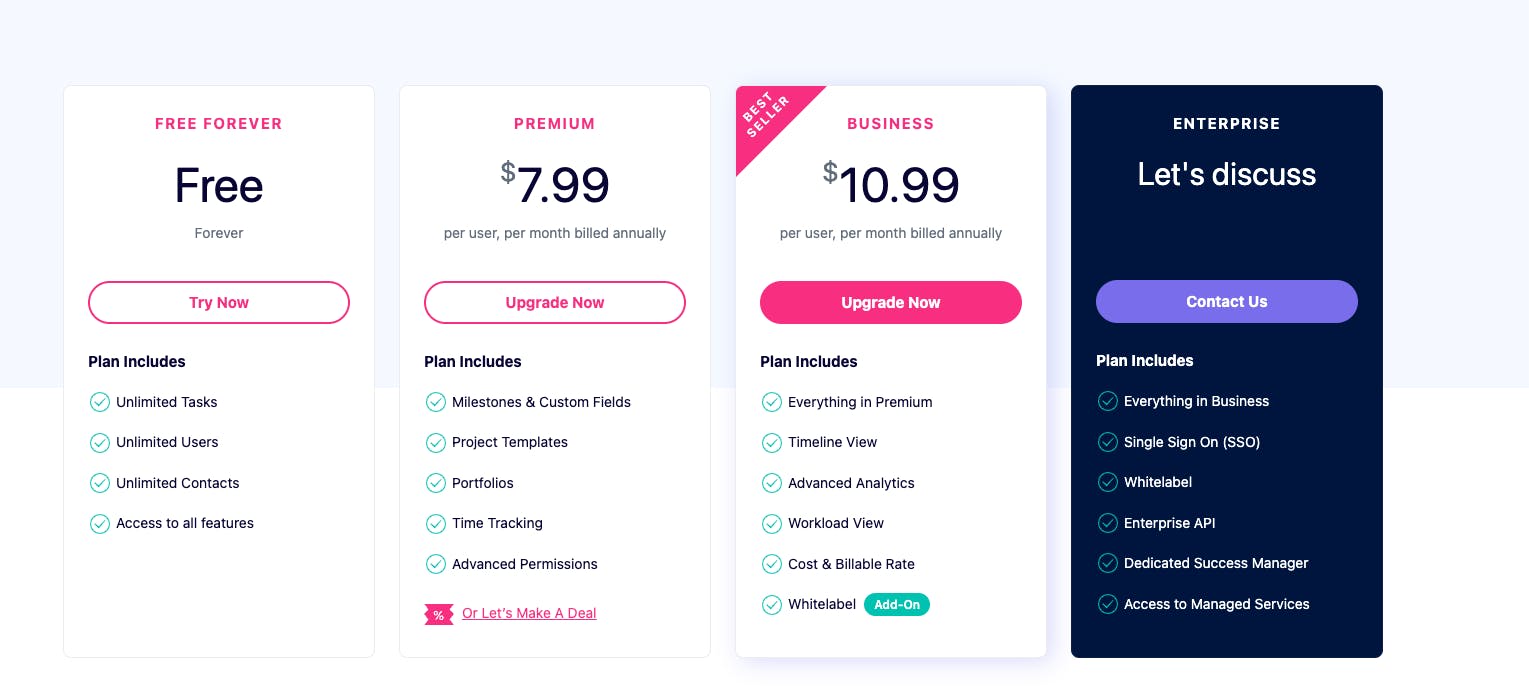
Don’t settle for less—transform your project management experience today!
Sign up for our Free Forever plan and discover how SmartTask can elevate your workflows, enhance collaboration, and drive results for your projects.
Which Tool Wins In 2025?
Both Trello and Jira are well-established project management tools, each catering to different needs.
Trello is ideal for lightweight projects and teams that don’t require task dependencies or reporting.
Jira stands out for its extensive features tailored to technical users and development teams.
SmartTask, however, bridges the gap, offering an all-in-one solution for diverse needs—whether for agencies, consultancies, or high-tech teams.
With features like task dependencies, built-in CRM, time tracking, resource allocation, and budget optimization, SmartTask addresses industry-specific challenges while ensuring ease of use.
Ready to elevate your project management experience?
Book a demo or start your risk-free unlimited trial with SmartTask today!
Frequently Asked Questions (FAQs)
1. Which is better for agile project management: Trello or Jira?
Jira is the better choice for agile project management. It offers features specifically designed for agile methodologies, such as Scrum and Kanban boards, detailed reporting tools, and customizable workflows. Trello can be used for agile projects but lacks the advanced features and flexibility Jira provides for agile teams.
2. Which tool is better for small teams?
Trello is ideal for small teams due to its user-friendly interface and easy onboarding process. It’s a lightweight solution perfect for teams that don’t need complex project management features.
3. Which has a better mobile app: Trello or Jira?
Trello offers a more streamlined and intuitive mobile app experience, making it easy for users to manage tasks and collaborate on the go. Jira’s mobile app is more feature-rich, but it can be overwhelming.
💡You Might Also Want to Check Out:-
👉 Top 19 Asana Alternatives in 2025 (Free & Paid)




